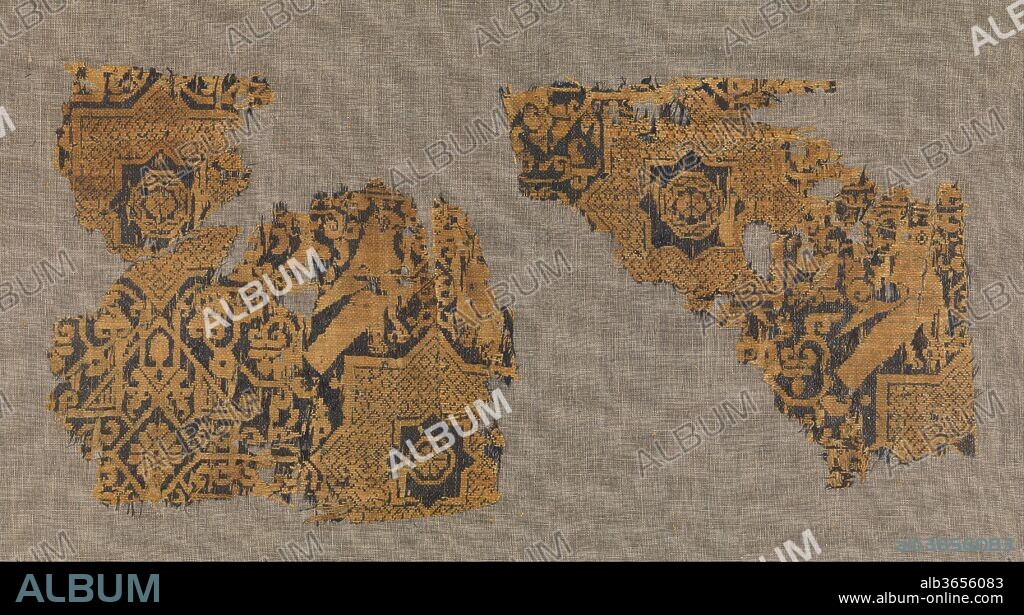alb3656083
Textile with a Pattern of Stars and Birds, Originally from a Cap

|
Add to another lightbox |
|
Add to another lightbox |



Title:
Textile with a Pattern of Stars and Birds, Originally from a Cap
Caption:
Textile with a Pattern of Stars and Birds, Originally from a Cap. Dimensions: Textile: H. 5 in. (12.7 cm)
W. 5 1/4 in. (13.3 cm)
Mount: H. 7 3/4 in. (19.7 cm)
W. 12 3/4 in. (32.4 cm)
D. 7/8 in. (2.2 cm). Date: 11th-12th century.
This textile was part of a cap, whose paper lining (46.156.11b) shows words of an inscribed text. The style of this script appears to be connected with the Ayyubid, late Fatimid or early Mamluk periods, while the silk samite technique is attributed to Seljuq Iran. The weavers employed two warps and two or more wefts to create the silk textile called samite. Here, eight-pointed stars, diamond-shaped motifs with foliate endings, and confronted birds compose the textile's intricate pattern.
This object was owned by Giorgio Sangiorgi, an Italian textile collector who had also inherited his father antiquarian activity at Palazzo Borghese in Rome. In 1946, it was acquired together with large part of his collection by his friend and dealer Adolfo Loewi, who sold it to the Metropolitan.
Technique/material:
Silk; samite
Museum:
Metropolitan Museum of Art, New York, USA
Credit:
Album / Metropolitan Museum of Art, NY
Releases:
Model: No - Property: No
Rights questions?
Rights questions?
Image size:
4318 x 2368 px | 29.3 MB
Print size:
36.6 x 20.0 cm | 14.4 x 7.9 in (300 dpi)
Keywords:
 Pinterest
Pinterest Twitter
Twitter Facebook
Facebook Copy link
Copy link Email
Email

